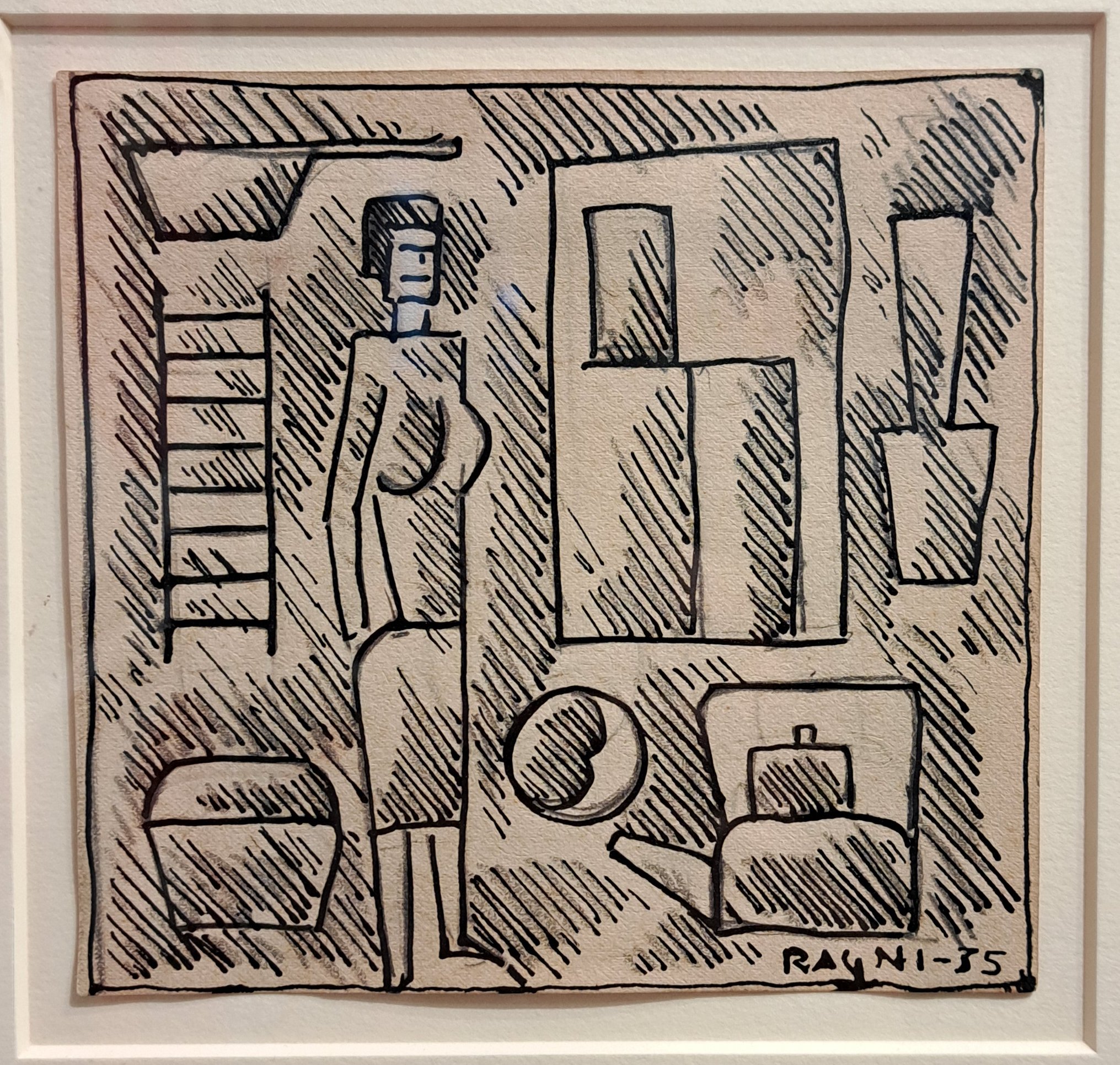Southern patterns
361 Main Street, Kentlands, Gaithersburg, Maryland, 20878 USA
January 28 - March 4, 2023
Artists
Southern patterns
“To abstract from representation means to rescue the depth of art, which is in the architecture or construction of the work" (Torres Garcia)
Batalla, Serra and Larrosa are three artists closely committed to the tradition and teachings of constructive art that was developed by the master Joaquín Torres García in the early 1930s in Uruguay.
The Torres García Workshop was created as La Escuela del Sur. It was a workshop and also a collective teaching of art and painting based on Constructive Universalism. Due to the great prominence of its students and followers, the workshop became a Uruguayan artistic movement of reference.
His teachings were based on students discovering the organic structures of reality, applying the principles of pure abstraction proposed by Mondrian and the neoplasticists but without renouncing figuration, the local chromatic ranges or the iconographic tradition of their country, through the inclusion of schematic drawings, pictograms and easily recognizable symbols of popular culture.
With his art, Torres García searched for a universal language expressed through the communion of man with the cosmic order. Through the implementation of Constructive Universalism, he showed his students to be closer to the universal plastic values of composition, order, structure and symbolic forms, hence uniting the avant-garde and tradition. There is a myriad of universal symbolic elements immersed in the geometric structures of their canvases, resolved with a few linear strokes very close to those drawn by children. Symbols refer to specific objects (sun, house, clock, fish, sea, woman, etc.) or more complex ideas such as love, time, death, etc. He also had a clear political stance of universalism, of no borders, of criticism of the system, of coexistence with the United States and Europe. Therefore, his famous phrase "our north is the South”
Serra, Batalla and Larrosa have developed their own style, some of them investigating urban "graffiti" and providing a semiotic update, but maintaining a careful handling of the line and color, which is based on refined knowledge of the tradition of the Torres García Workshop. They also use symbols that bring together, that flexibilize and give us an infinite number of possible messages in its Constructive Universalism.
To Serra "art is an end in itself, not a means to tell things”. In his action paintings, Serra creates large, almost monochromatic surfaces, full of lines, ideas, symbols, geometric structures in motion and planes that invade the pictorial terrain. For Serra "The important thing is to build, compose, create and order the rhythm of the work with concrete elements (colors, lines, shapes). The anecdotal is secondary and the intuitive or what each one must give, is something else. I could say that it does not even depend on ourselves, in a conscious way.”
Entering a Serra painting is like taking a pause in time to give way to a textured interior space that fills our skin and our senses with emotion, a dream world that enriches us as observers and makes us part of his work.
Batalla creates art works loaded with symbolic languages where illustrated objects and playful structures are transformed into ideograms that invite the viewer to complete conceptual interpretations. For Batalla, "Everything changes over time ... My work itself, it can be said that it is rather symbolic ... symbolism, forms, measurement, composition, street art.” We can see in his works the influence of Rauschenberg’s expressionism, the gesticulation of Twombly and even the graphisms of Basquiat, thereby inviting us to a feverish and intricate conceptual interpretation of reality.
The work of Larrosa Martinatto is focused on language. He explores the boundaries between painting and writing, in favor of the creation of universal signs and symbols. The symbol generates structure and vice versa. In line with Constructivist tradition, the artist pushes the limits in art and considers letters as forms and texts as images. Letters and their configurations are a visual resource of great rhythm that mixes figure and background, producing an impeccable gestalt. Larrosa thinks that Torres García's teachings have to do with deeper issues from geometry, rhythm and proportion. "It is an internal question. He taught us to see, to feel that geometry and those rhythms.”
These art works take us to the roots and emotion of the mysterious evocations of art. For these artists, art is a way of life. Abstractions refer to ideas and not things, opening us up to the desire to be alone with these poetic and pictorial writings.
Gabriela Rosso



















